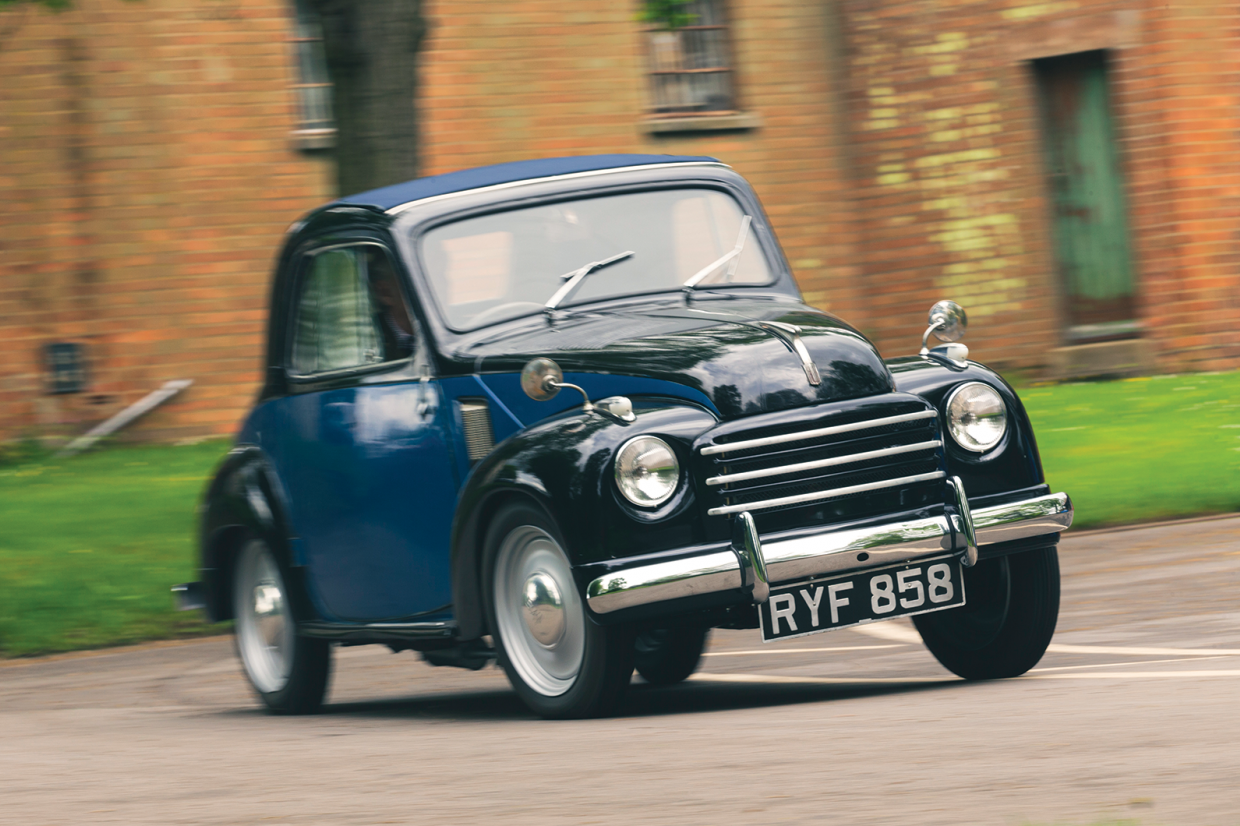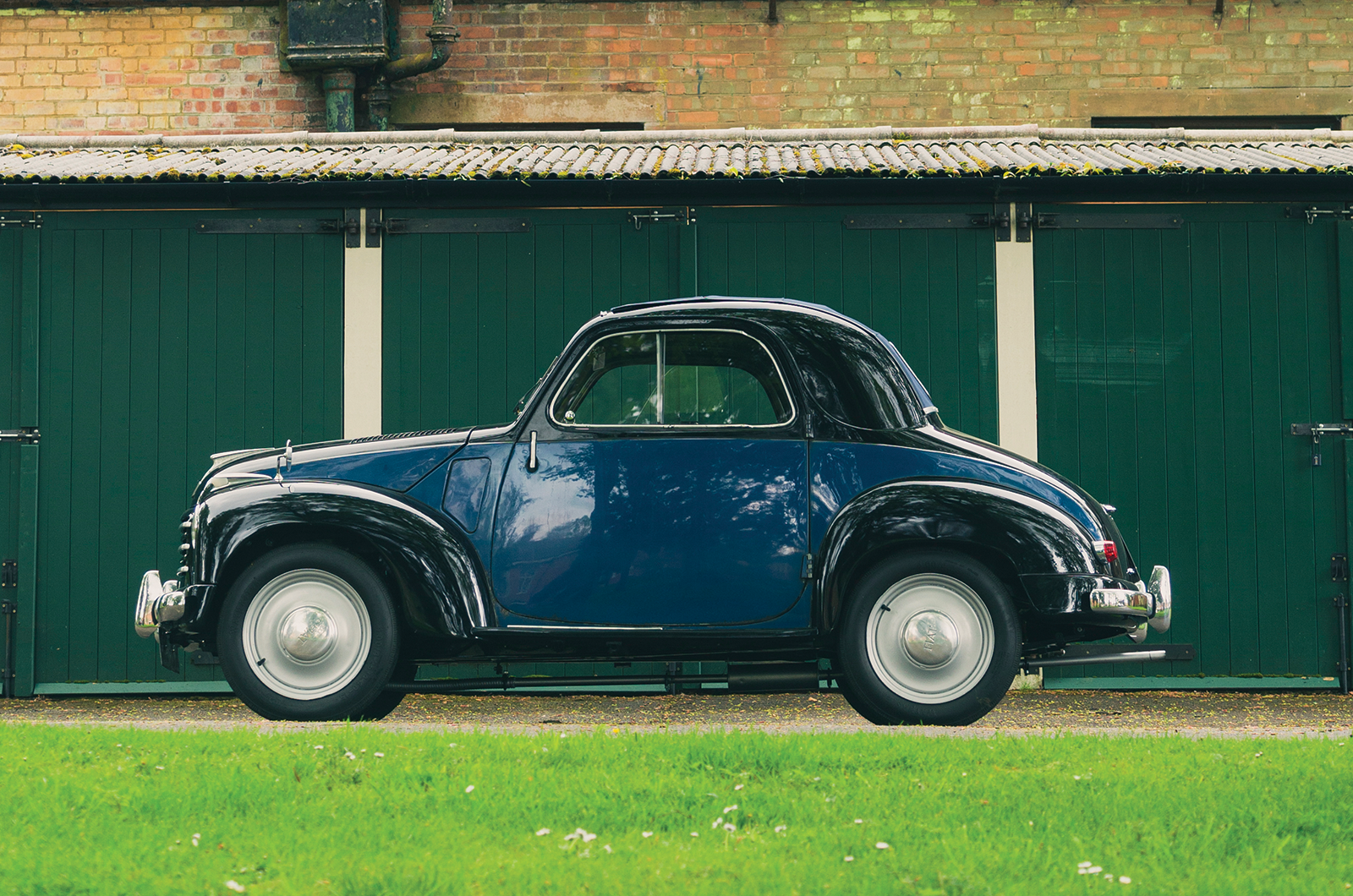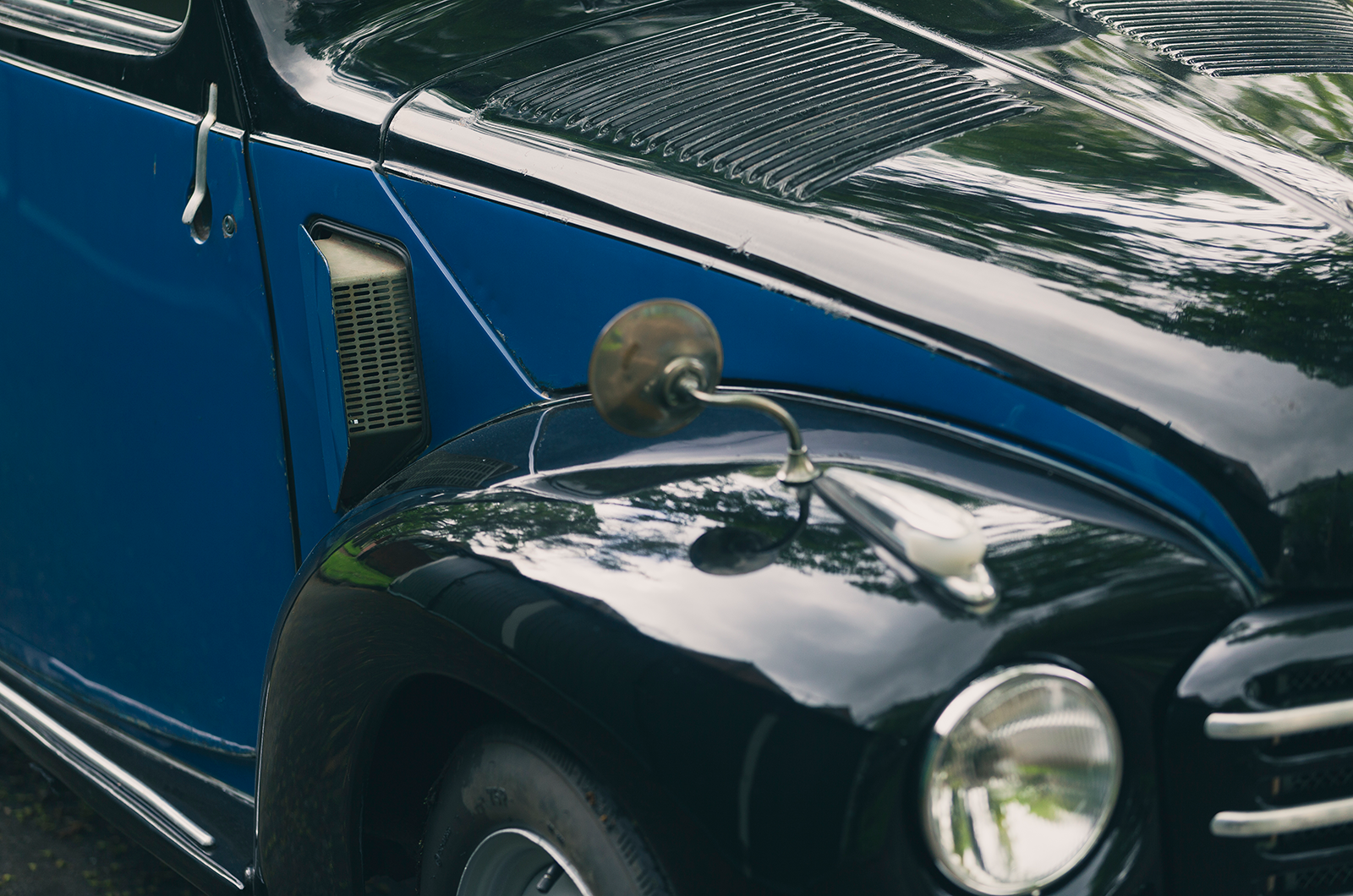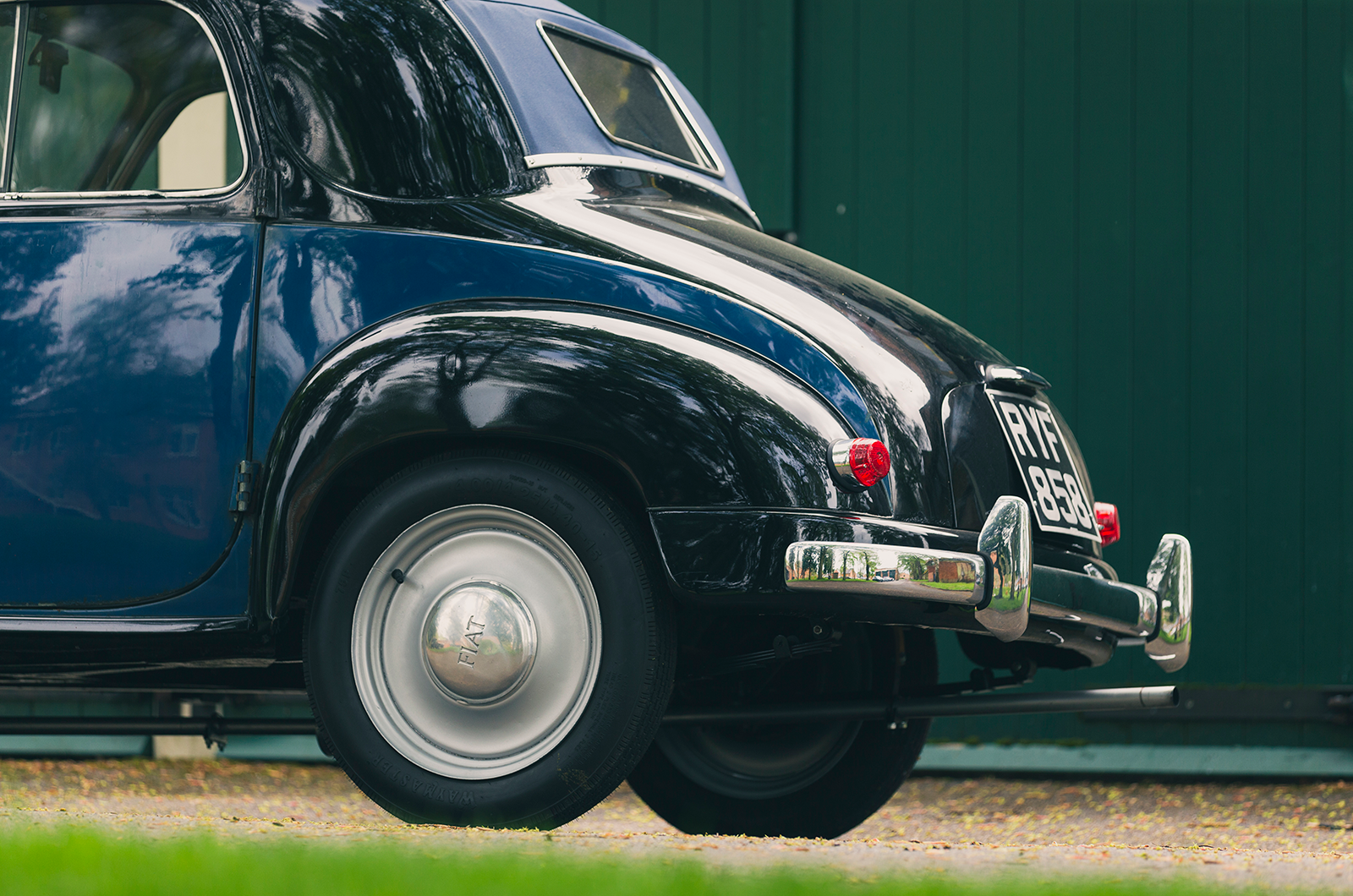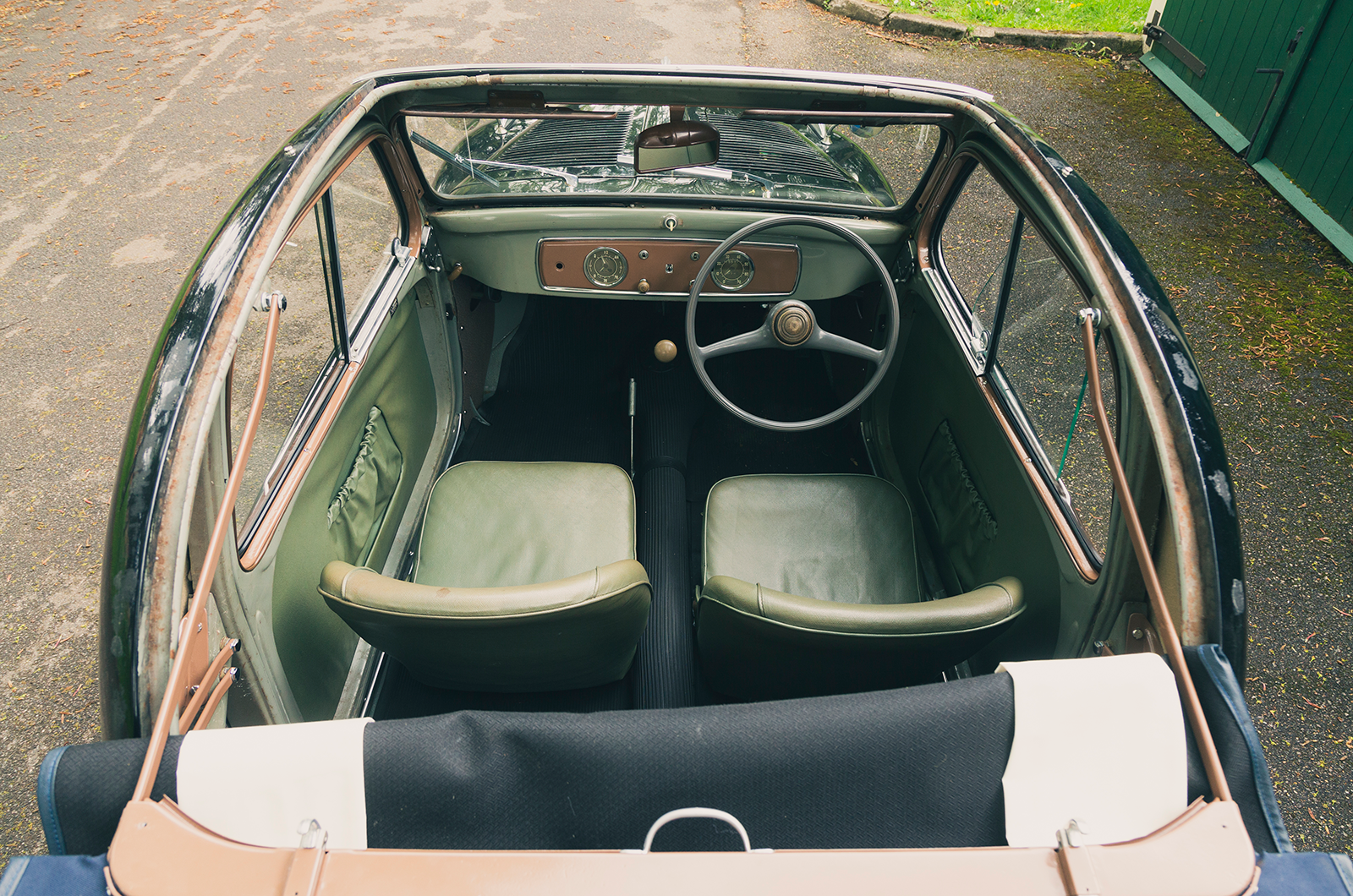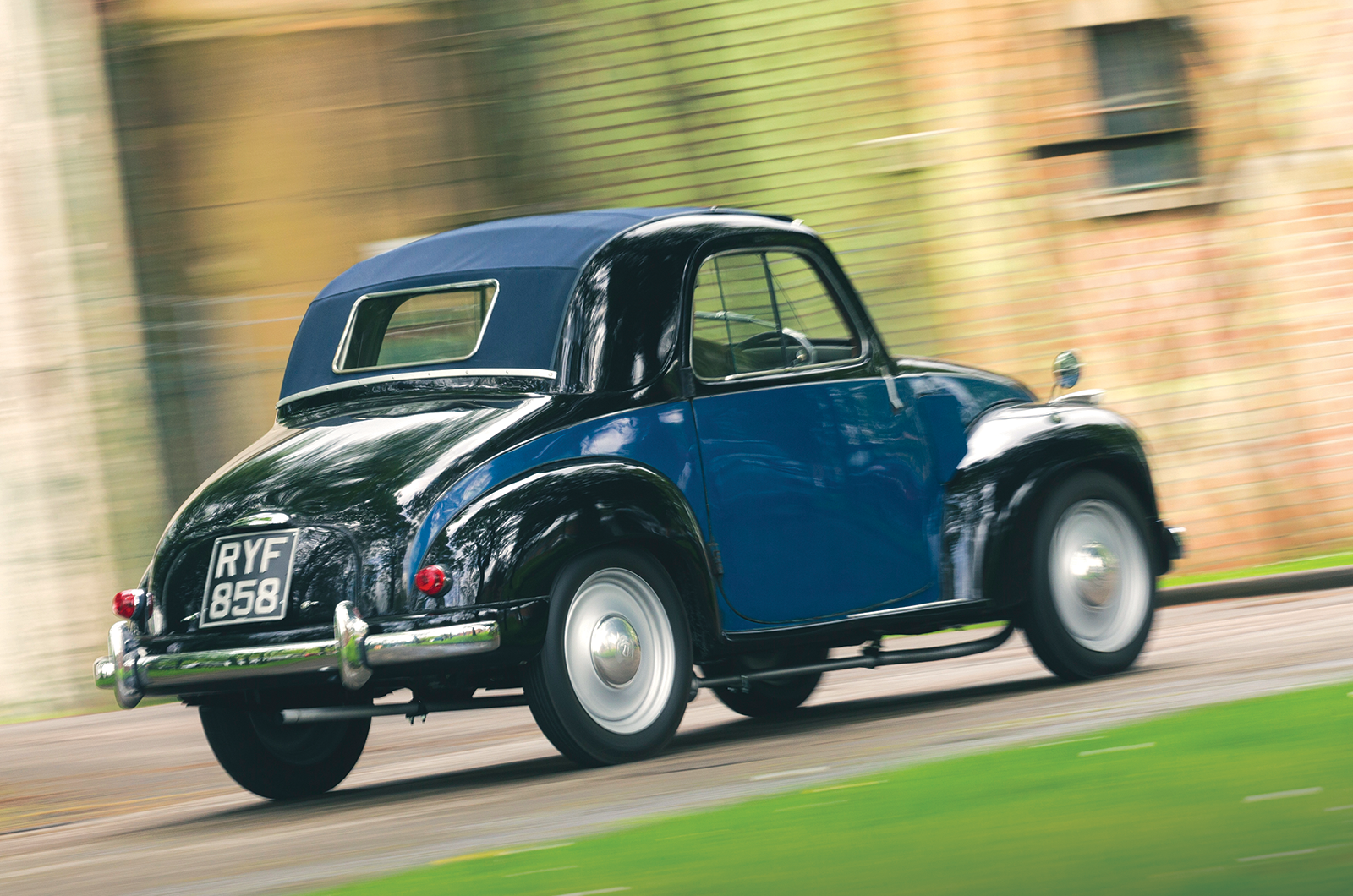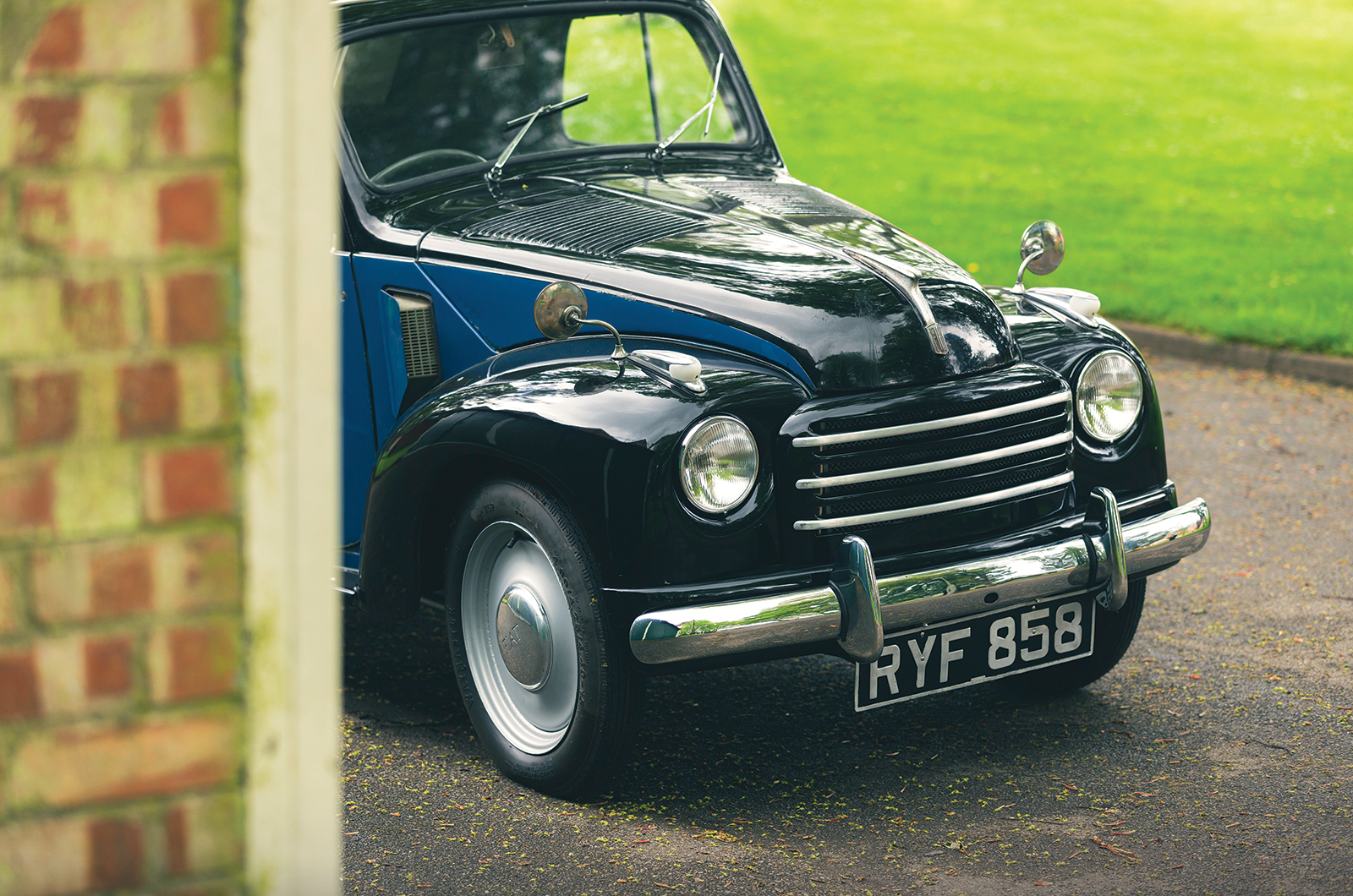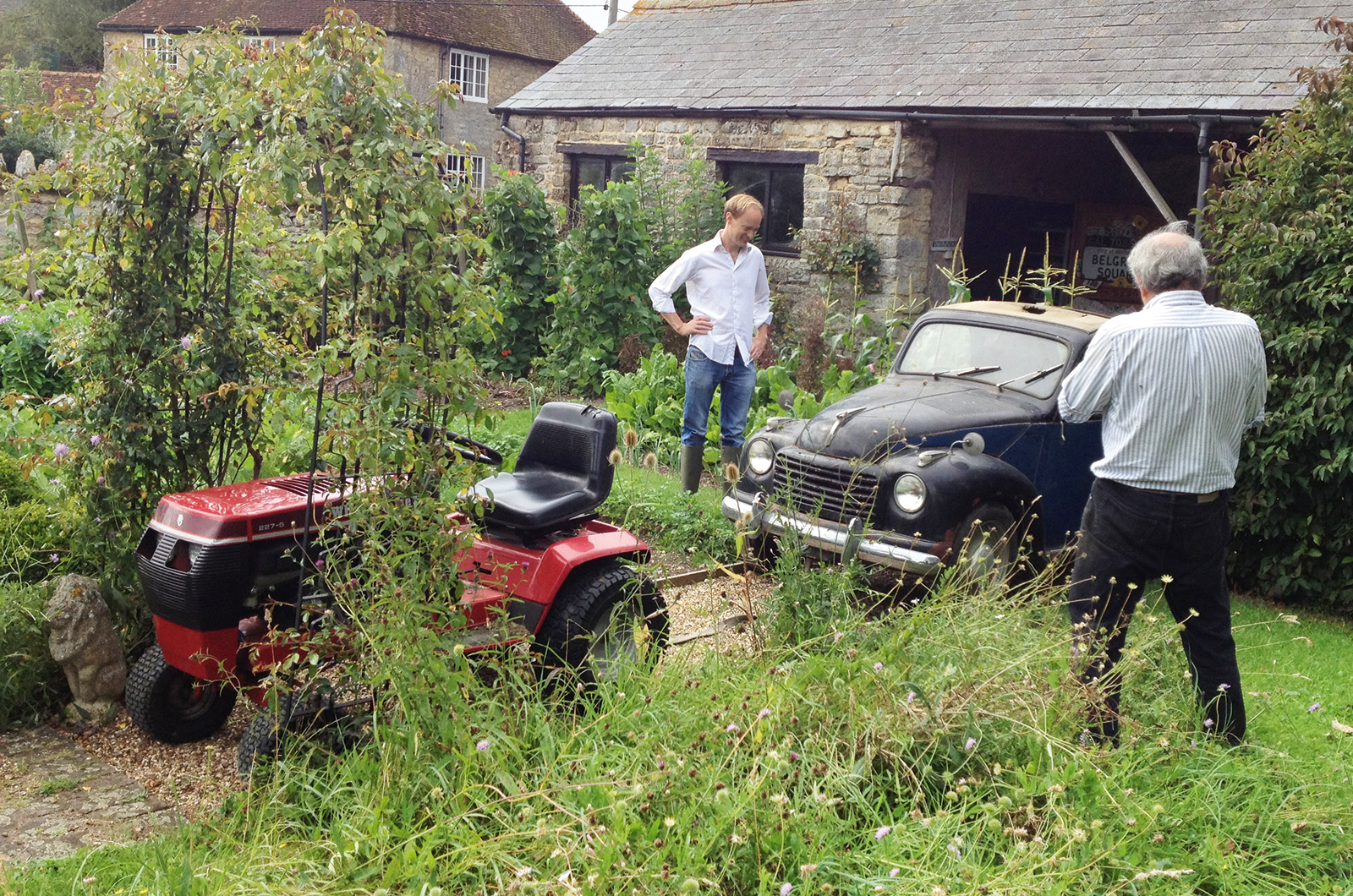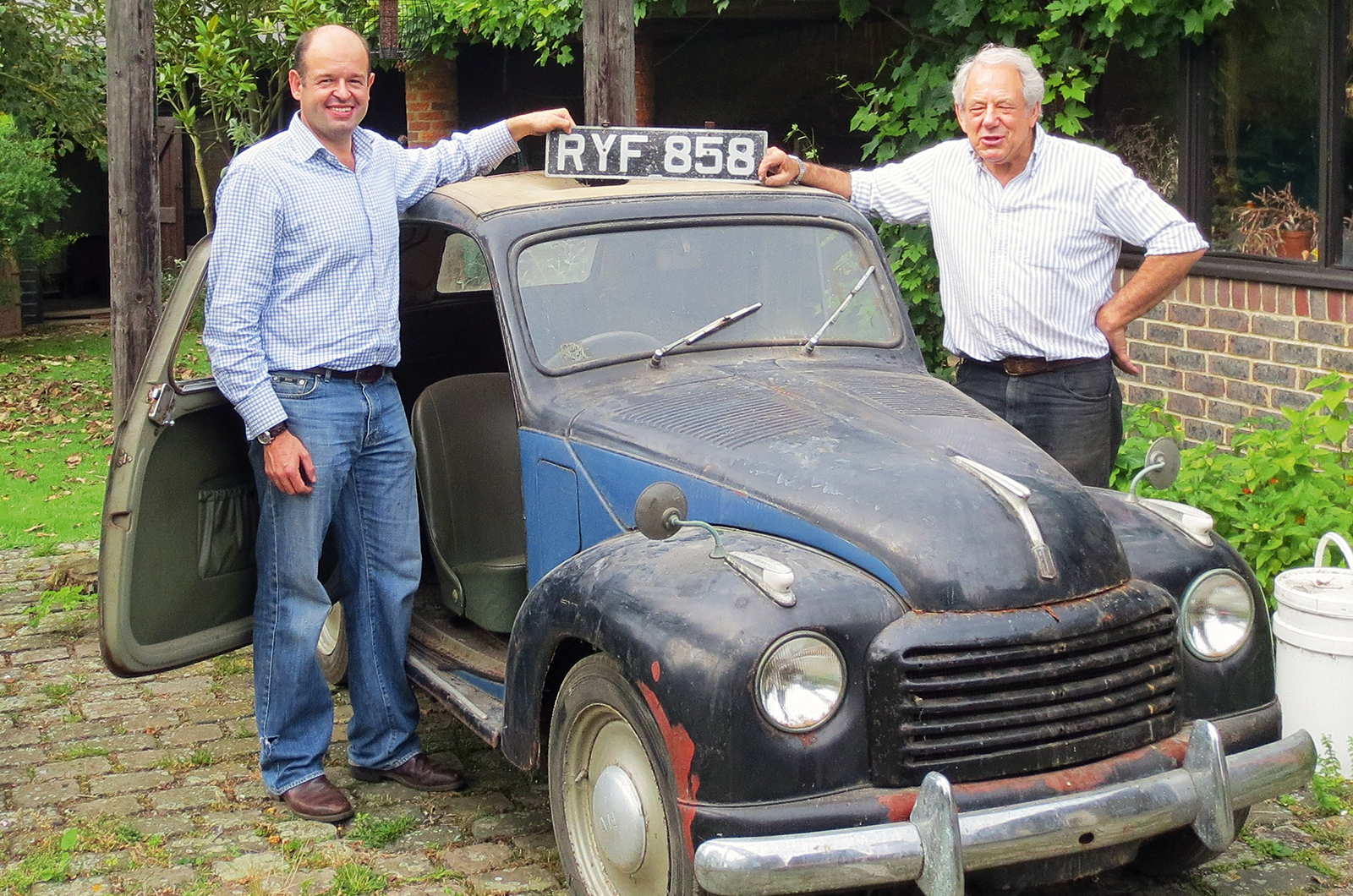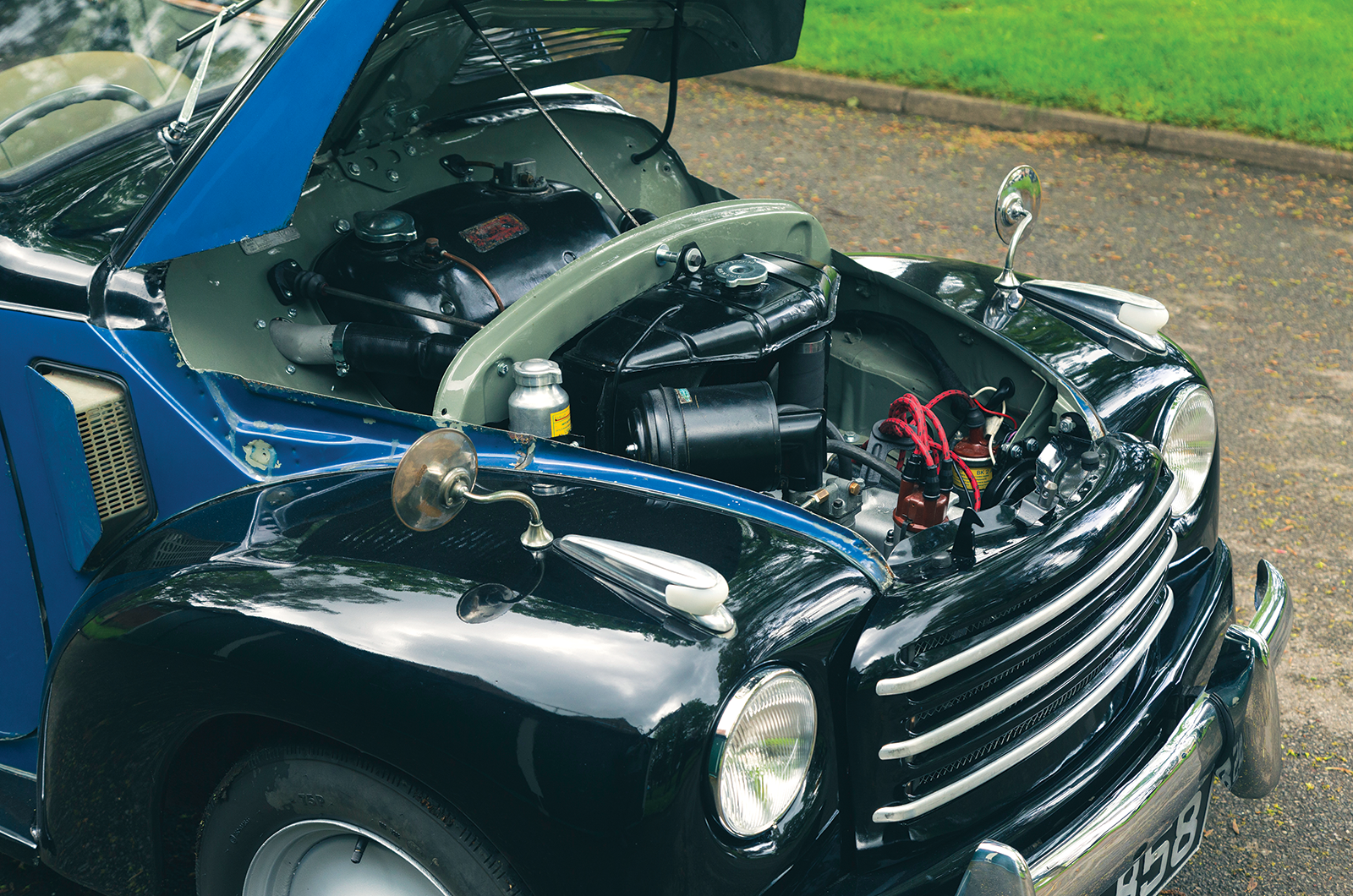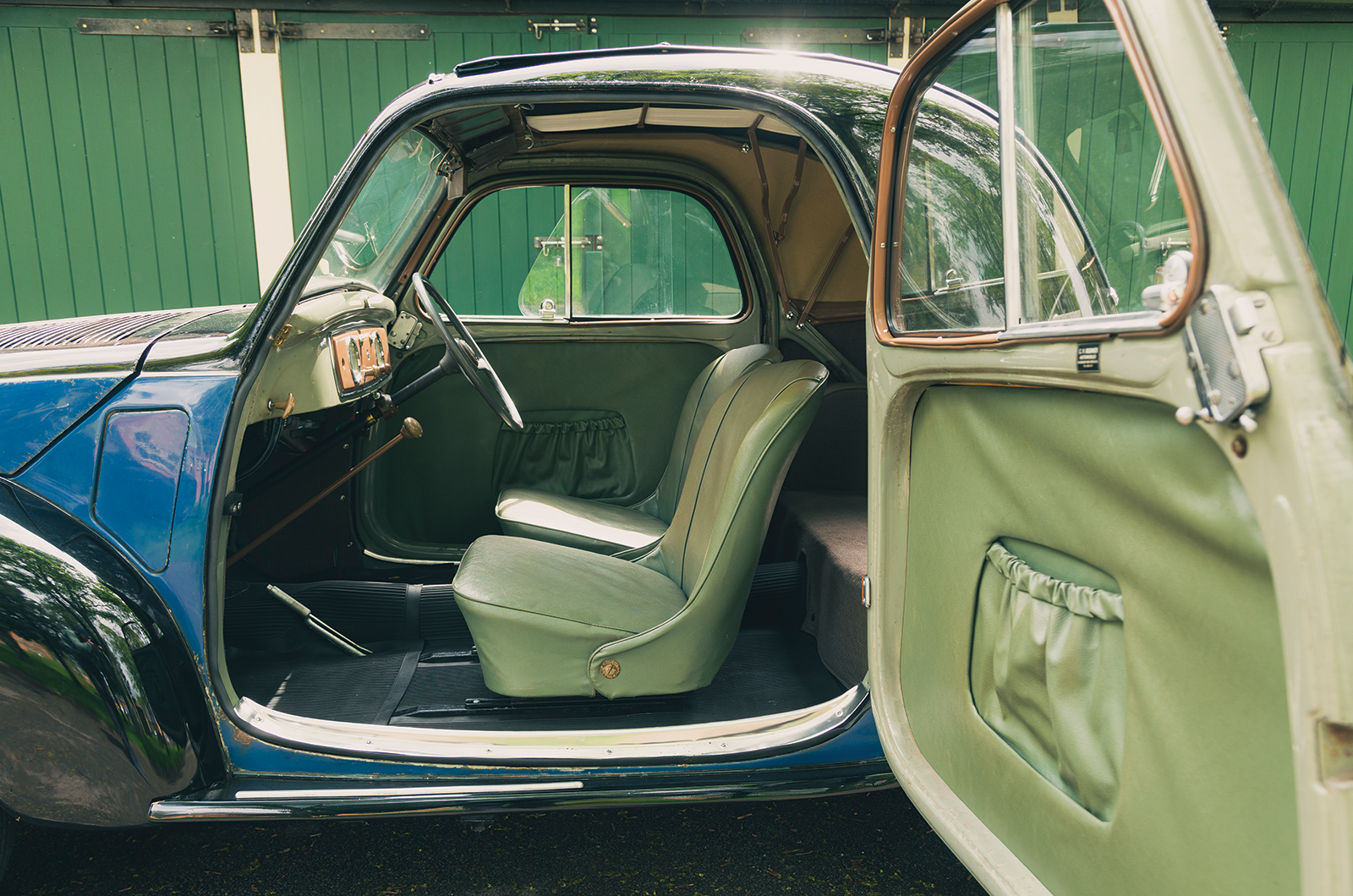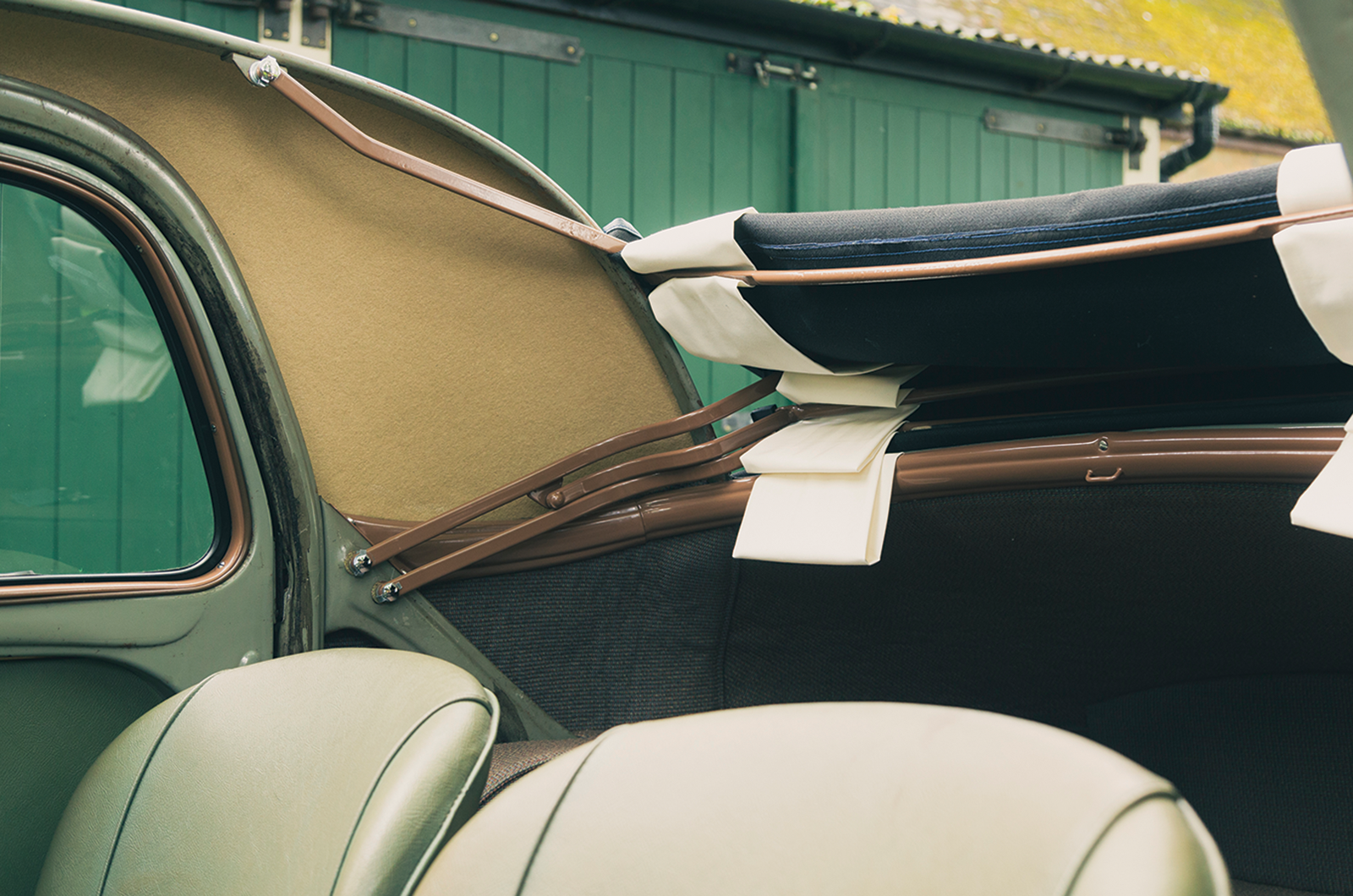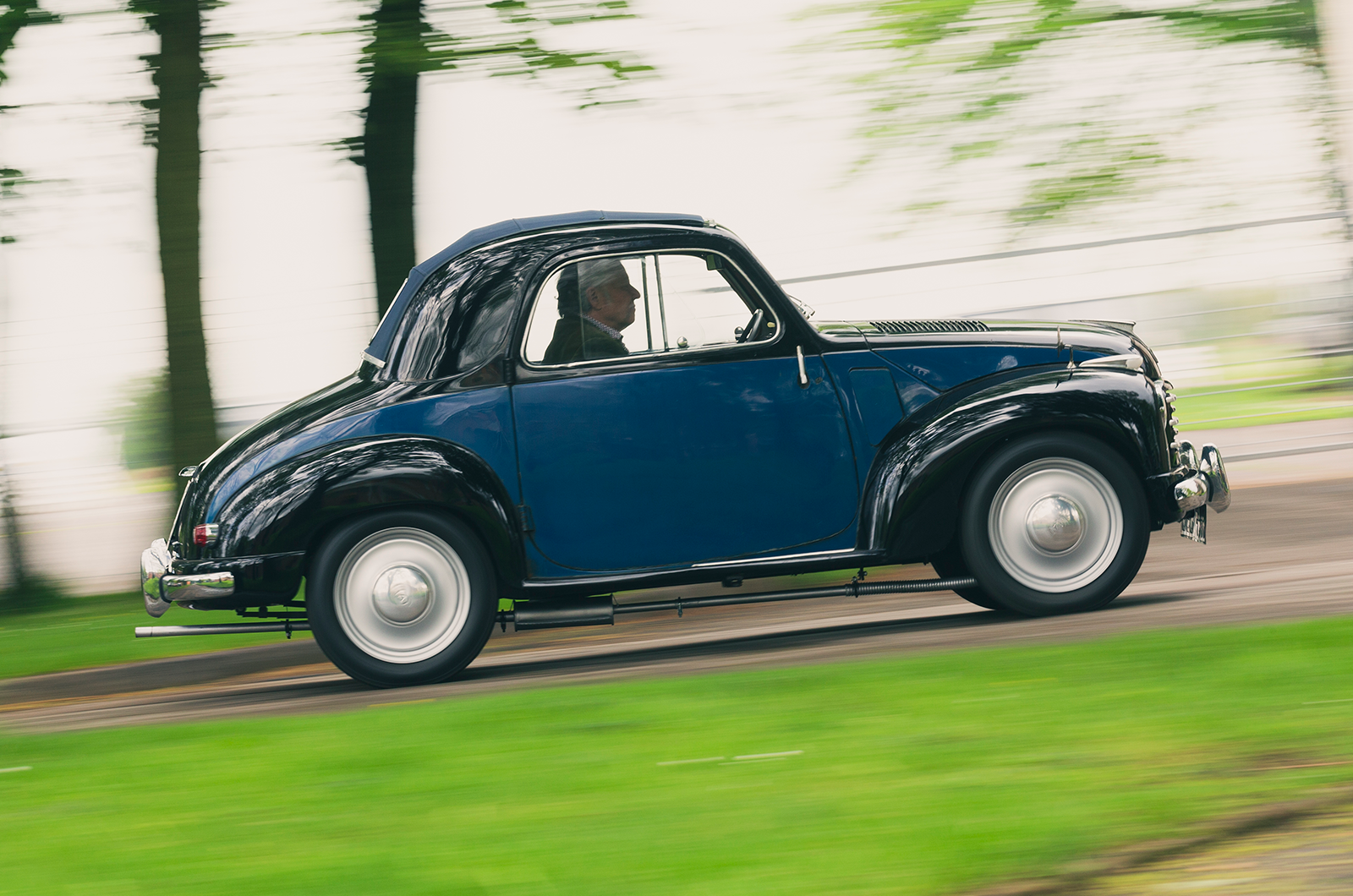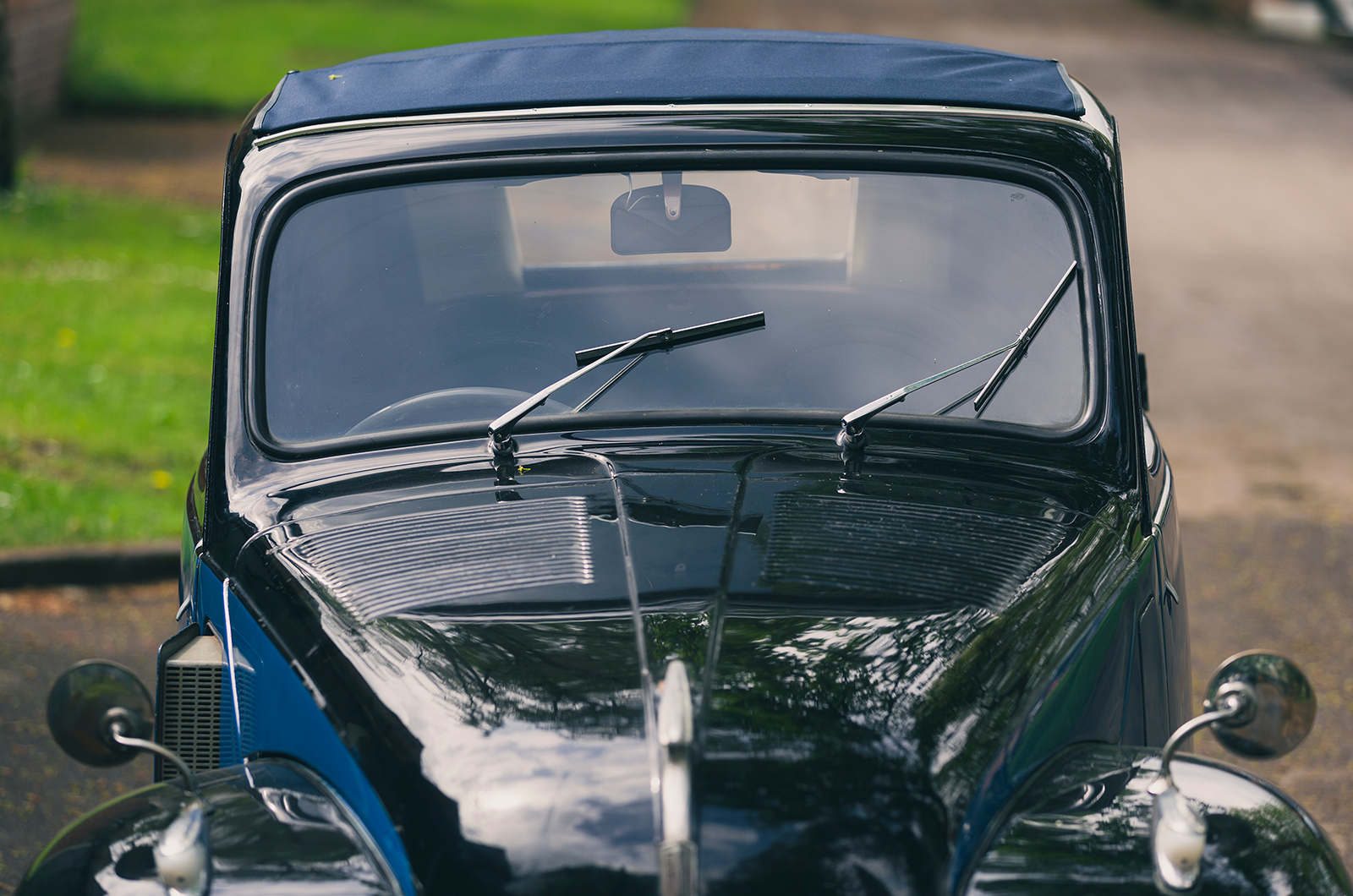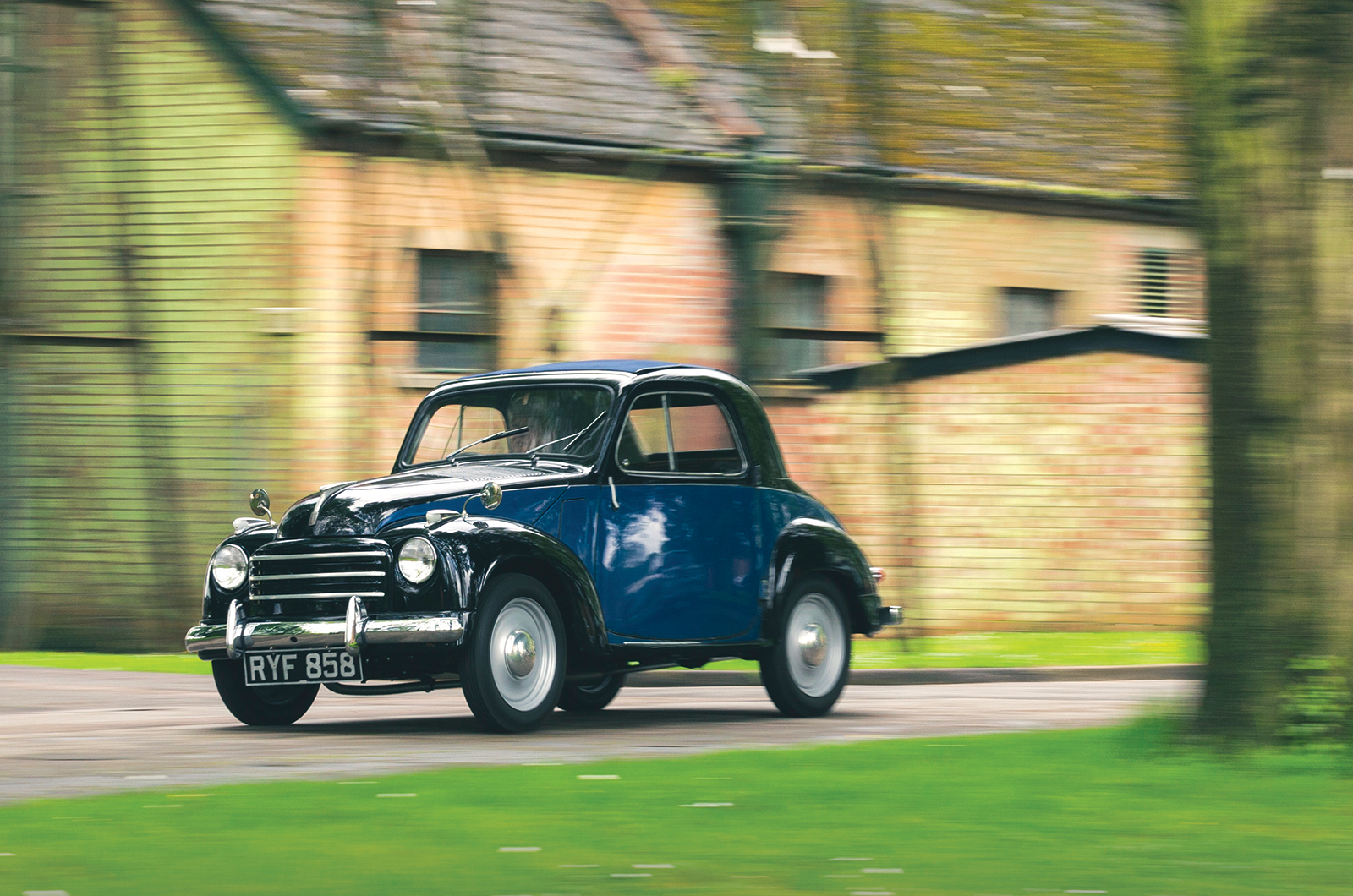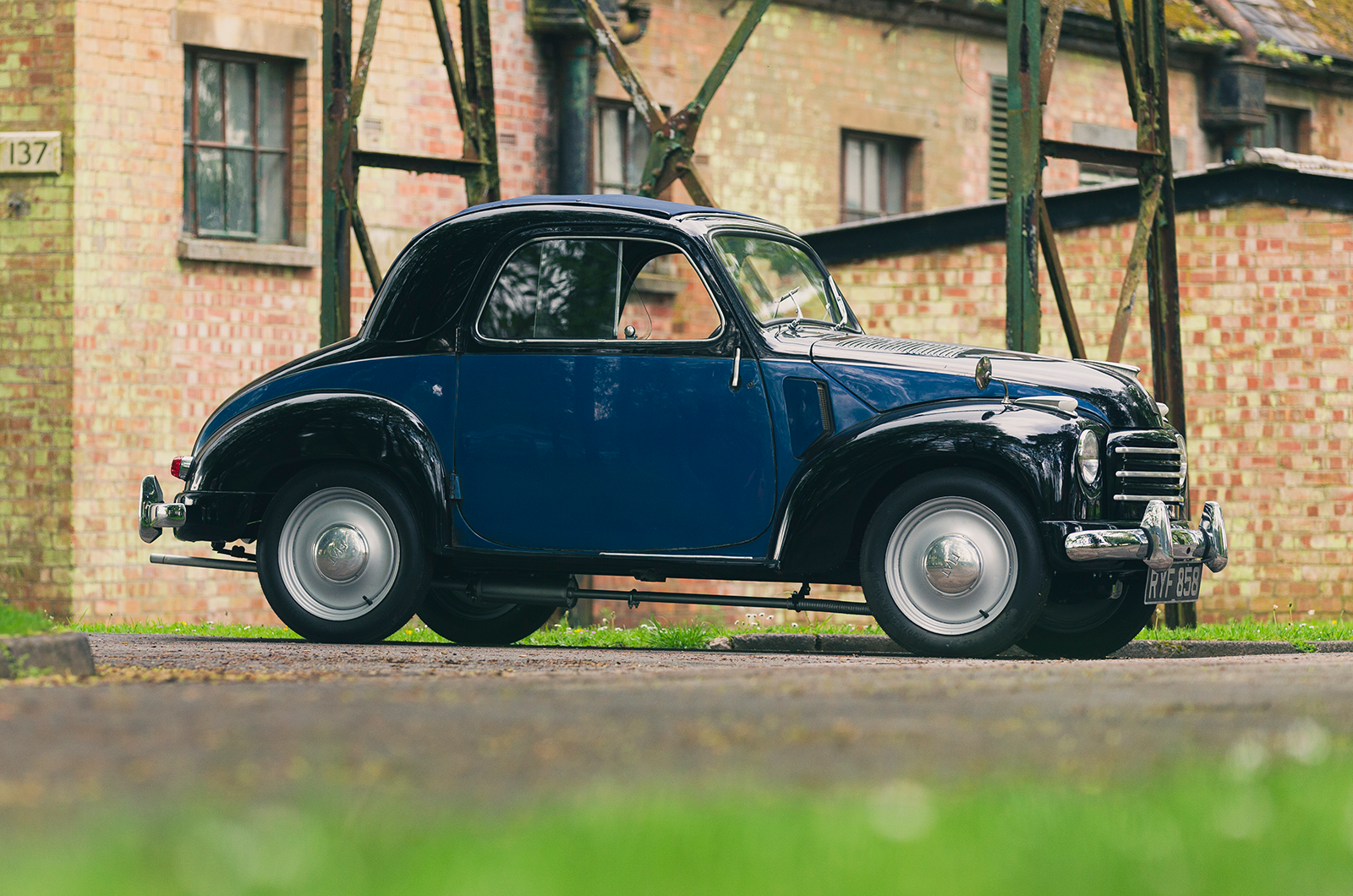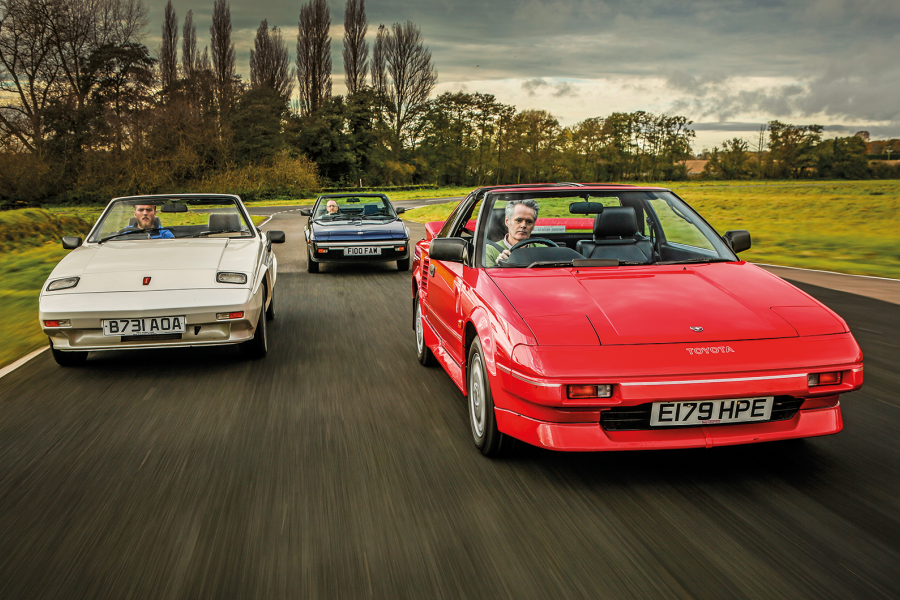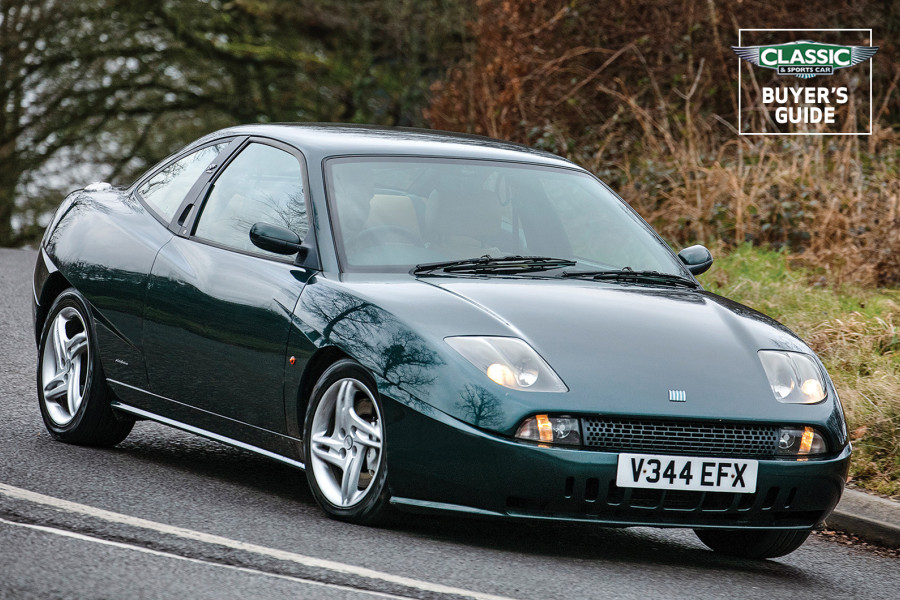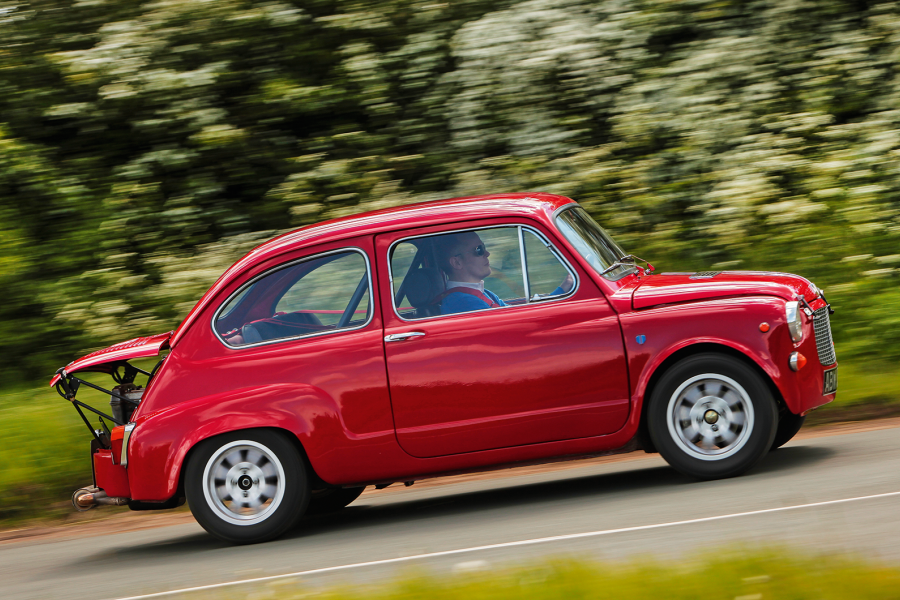If the Topolino avoids the garden-machinery feel of its rear-engined successor, you still have to admire the grit of those brave souls who campaigned these cars in the Mille Miglia.
People did cover long trips in them, including our racing Earl.
When he was stationed near Glasgow in WW2, Howe took the first of his Topolinos, FYO 892, with him.
Rivers Fletcher told a story about the Earl giving a girlfriend a high-speed run in the car around the Glasgow suburbs “to prove to her he was a racing driver”.
This classic Fiat was apparently untouched for decades
Keeping momentum must have been key, but you would not gain many friends today holding up traffic on steep inclines.
The noise, poor rear vision and the general terror of mixing with giant modern vehicles tends to make the Topolino as much as a social history lesson as a car.
The Earl lived in much less risk-averse times.
Rear vision? I doubt he was much bothered about what was behind when he used his Fiats to drive the 1.7 miles from Curzon Street to the House of Lords: past The Ritz, right on to St James’s Street and left on to The Mall.
‘The engine is fairly smooth and very flexible, pottering along in top from low speeds without complaint’
Here, perhaps, he took this little car up to 45mph, dodging sidevalve Fords and lumbering Daimlers.
A racing change into second, right on to Horse Guards, left on to Great George Street and the approach to Parliament Square.
Handy as they were around town, the 500s were not particularly reliable: Earl Howe’s daughter recalled having to help the family chauffeur push-start the little cars.
It seems at least one of the trio was kept as a source of spares.
His reluctance to part with them may stem from the fact that, pre-1954, no new Fiats were being sold in the UK.
This car, so sensitively and sympathetically brought back to life, is thought to be the only one of the Earl’s Topolinos to survive.
Images: Luc Lacey
Thanks to: Bicester Heritage
Factfile
Fiat 500C ‘Topolino’
- Sold/number built 1936-’54/519,646 (all)
- Construction steel chassis, steel body
- Engine all-alloy, ohv 569cc ‘four’, single Solex carburettor
- Max power 16.5bhp @ 4400rpm
- Max torque 22lb ft @ 2900rpm
- Transmission four-speed manual, with synchromesh on third and top, RWD
- Suspension: front independent, by wishbones, transverse leaf spring rear live axle, semi-elliptic leaf springs, anti-roll bar; telescopic dampers f/r
- Steering worm and sector
- Brakes hydraulic drums
- Length 10ft 5¼in (3181mm)
- Width 4ft 2¼in (1276mm)
- Height 4ft 5in (1346mm)
- Wheelbase 6ft 5½in (1968mm)
- Weight 1344Ib (610kg)
- 0-50mph 37.8 secs
- Top speed 58mph
- Mpg 45-55
- Price new £575
- Price now £15-40,000*
*Prices correct at date of original publication
Enjoy more of the world’s best classic car content every month when you subscribe to C&SC – get our latest deals here
READ MORE
Future classic: Fiat 500
A 25,000-mile adventure in an Austin Seven
Bugatti Type 57 Atalante: tour d’élégance
Martin Buckley
Senior Contributor, Classic & Sports Car
